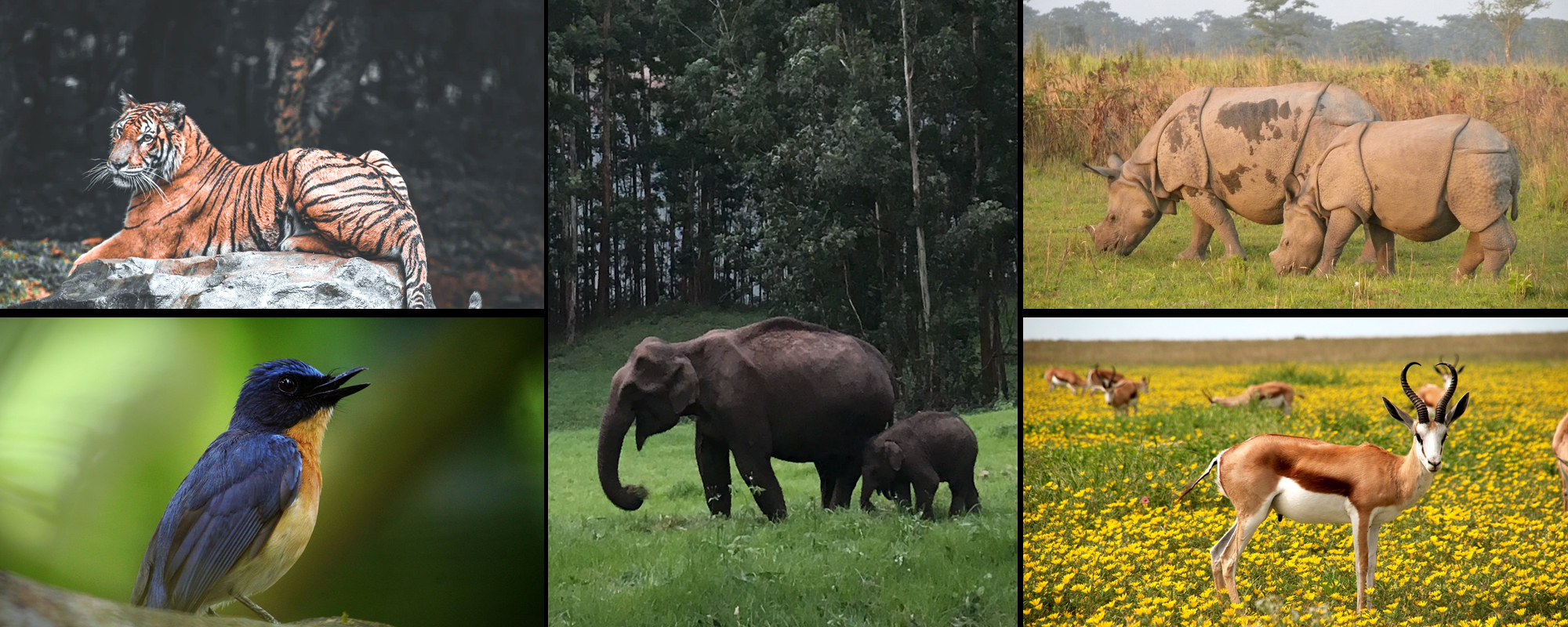
One of the oldest Tiger Reserves of India since 1974, Betla National Park is made up of luxuriant tropical forests and a rich and diverse variety of flora and fauna. Spread over the hilly topography of the beautiful Palamau district, west of Ranchi in Jharkhand, Betla National Park was first established as a Wildlife Sanctuary in 1973 and later as a National Park in 1986. Wild elephants here roam freely without any limits in the dense foliage of forests and the marvelous flora and fauna are enough to attract and charm any visitor.
Although the population of tigers is comparatively less here, Betla National Park must be on your itinerary when you visit Jharkhand to gain a deep understanding of the tribal heritage of the state which comprises of ethnic groups like Munda, Kherwa, Chero, Kisan, and Birjia. Betla stands as an acronym for Bison, Elephant, Tiger, Leopard, and Axis which are the dominant fauna species that can be spotted here and witnessed in their natural habitat from close proximity. Apart from the extensive range of wildlife species and exotic flora that enhance the landscape, the park also has two forts in its location that make it a good point for a photoshoot and stand out from the rest. A popular national park in the state of Jharkhand, it stretches in an area of over 979sq. kilometers, out of which 232sq. kilometers of the area form the main area and has been declared as one of the 9 Tiger reserves that were recognized in India.
The diversified ecosystem offers a differentiated flora and fauna to thrive which is the highlight of the park. The southern side of the forest is dominated by Sal trees whereas the Bel Aegle Marmelos is spread over the northern section of the forested area. The mighty slopes of the park are marked by small hills like Netarhat, Huluk, Murhu, and Gulgul which can be explored by trekking through the forest. Various waterfalls and streams inside the park make it a fascinating place to explore and to spend a day with your family and friends.
The vegetation here mainly consists of tropical wet evergreen forests, mixed deciduous forests, and temperate alpine forests. The tropical wet evergreen forests are in the lower reaches, mixed deciduous forests in the middle, and the temperate alpine forests are in the upper reaches that includes Sal and Bamboo as their main components along with many other medicinal plants.
Mammals: Elephant, Leopard, Panther, Jackal, Bison, Tiger, Axis, Sloth Bear, Sambar Deer, Indian Civet, Chital, Nilgai, Langur, Mouse Deer, Porcupine, Chinkara, etc.
Birds: Hornbill, Peafowl Red Jungle Fowl, Black Partridge, White Necked Stork, Black Ibis, Swamp Grey, Pied Born Bill, Wagtails, Harial, Dove, Drongo, Crested-Serpent Eagle, Forest Owl, etc. Aquatic birds like Duck, Snipe, and Geese can also be found near the Kamaldah Lake.
The climate here is tropical throughout the year with the average temperature of 37 degrees Celsius in Summers and 5 degrees Celsius during the Winters. The rea receives moderate rainfall from the months of mid-June till August.
The park can be visited any time of the year but the most ideal time would be from November to April when the heat is not very scorching. If you can bear the heat, then visiting the park in May and June is also ideal to spot tigers and other animals because the forest cover is less and animals often wander around the water bodies to drink.
Nearest Train Station: Daltonganj, which is also the closest town from the park, is the nearest railhead from here. Ranchi and Gaya are the other two railway stations close to Belta Park.
Nearest Airport: The closest airport from Belta National Park is in Ranchi at about 180km of distance. The airport connects to flight from all the major cities of India and taxis and buses are available from the airport to take you to the park entrance.
Road Accessibility : The park is well-connected by a road network and can be reached from all the major cities and nearby towns.
Copyright 2012-2022 Indiamap Digital Pvt Ltd. All rights reserved. Privacy Policy | Terms of Use